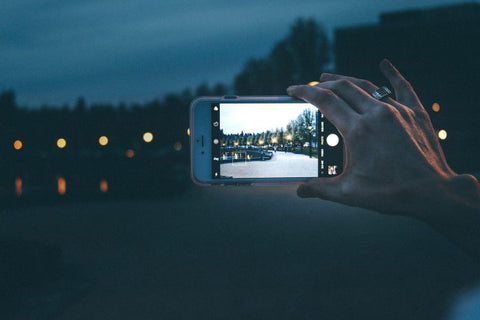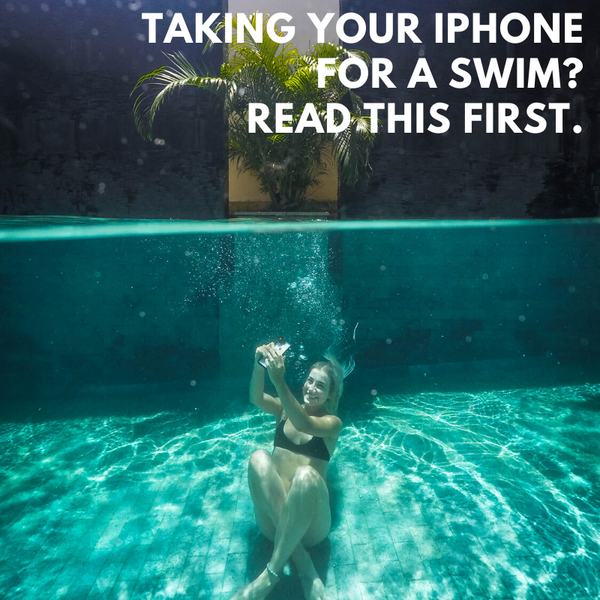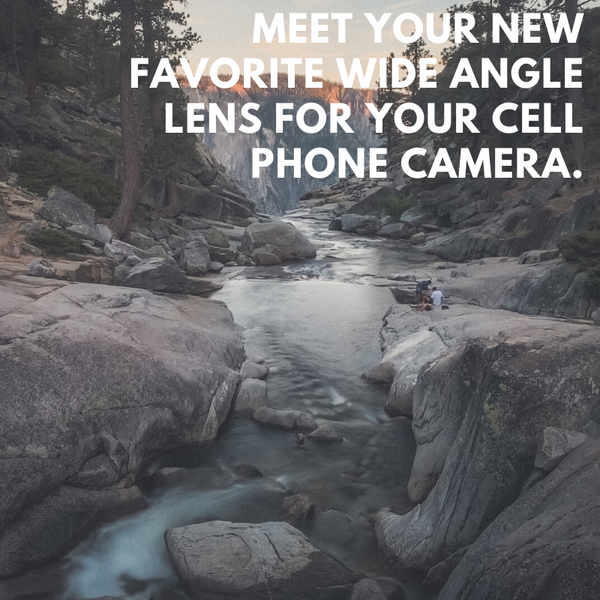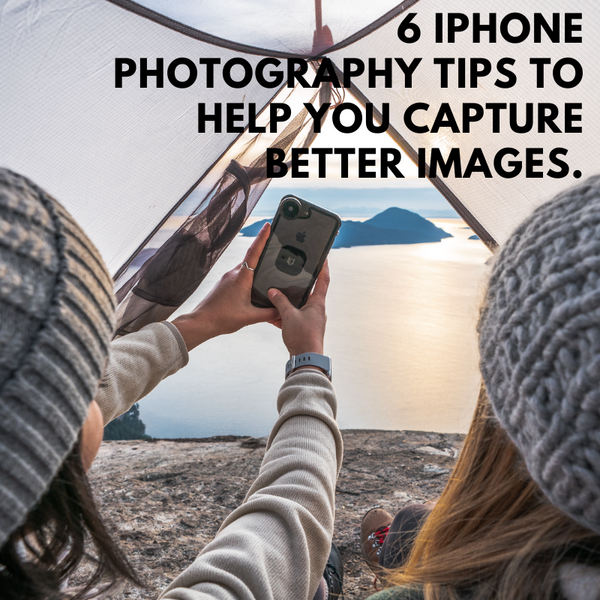iPhone X Photography: Low Light Photos
Surprise! An iPhone is Still the Best Low-Light Camera
News about the iPhone X's capabilities in low-light situations is well chronicled. There have been great reviews about the iPhone X’s ability to cap off ISOs (to prevent grainy images) and still get incredibly buttery, yet vivid images.
Read: How To Change The ISO Settings On Your iPhone
The iPhone X is known for taking incredible photos. But, with that being said, you may have noticed that there are some limitations when it comes to iPhone X photography.
For example, it's not possible to adjust the depth of field in the iPhone X in bright or low-light situations. At Hitcase, we took it upon ourselves to figure out why this is the case. Keep reading to learn how you can better your iPhone X photography skills and master taking photos in low-light situations!
Your iPhone X Photography Capabilities
While your iPhone X may fall short in bright or low-light photography situations, the device actually has some incredible photography capabilities built right into it.
The thing that gets most people at first glance is the iPhone X's bokeh. The bokeh is that gorgeous blurry background that shows up in photographs, no matter the time that the image was taken. The iPhone X has a clever understanding of the depth of field and instead of creating a stark blur, gradually blurs objects around their edges. This is impressive because a computer is doing all of this, and not a physical lens!
A huge surprise to iPhone X photographers, especially those who have recently upgraded from a device like an iPhone 7 Plus, is that the iPhone X only needs 25% of the light that you needed for the iPhone 7 Plus. In order to get bokeh in images, the iPhone X's telephoto lens works faster in low-light scenes, and the iPhone decides on its own whether that lens type is needed — even if you've set it up.

Your iPhone X in Low-Light Situations
Although the iPhone X received numerous software upgrades to improve the camera’s ability to capture high-quality images in low-light, you still do not have the ability to adjust the depth of field in bright or low-light situations. Adjusting the depth of field will either increase or decrease the sharpness of the background of a photo.
A shallow depth of field is great for capturing the details of a single subject, while making the subject stand out from the background. For example, when you take an iPhone photo with portrait mode, the device is automatically adjusting the depth of field to make the focus subject stand out.
In low-light, your iPhone X will attempt to widen the aperture to allow more light into the camera. However, by allowing more light into the camera, the depth of field is also reduced. The shallower depth of field leads to a less sharp image. To combat the blurriness, you would need to manually adjust the depth of field, which is not possible with the phone's camera lens.
Use a Lens to Enhance Your iPhone X Low-Light Photos
Because the iPhone X camera software does not allow for manual depth of field adjustments, consider using an iPhone camera lens snap-on lens. Snap-on lenses from Hitcase allow you to take your iPhone photography to the next level.
Hitcase offers a variety of snap-on lenses, including Wide, SuperWide, and Macro lenses that are waterproof and built to withstand any adventure. With threaded (PRO) and magnetic link (SHIELD LINK, CRIO) mount systems, Hitcases' snap-on lenses are easy to attach to your phone so you never miss a moment worth capturing.
Each lens allows you to manually adjust the depth of field, which means your low-light photos will look just as stunning and sharp as your daytime photos. With a telephoto lens accessory, you'll be able to get the value of your iPhone X's camera features and improved low-light performance.

A perfect setup, for example, is the Hitcase Pro case for iPhone X combined with the TrueLux Lens Kit -find it here. This allows you to switch between your iPhone lenses and have even more control over your photographs' depth of field, all while protecting your phone from impact and water. The Hitcase Pro for iPhone X is a notoriously rugged and activity proof case that can really be put through its paces!
Why would you do that?
Well, unless you want to end up with an unusable image, it stands to reason that you'd want to get an accessory that does the work for you so that the only thing that works is your iPhone's microprocessor and not the built-in lens. Unfortunately, when you zoom in, using the iPhone X, in low light situations you will end up with a cropped image whether you're zooming or trying to force the iPhone to use a wide lens. Sorry.

Use iPhone Settings to Get Better Low-Light Photos on iPhone X
For seasoned iPhone photographers, the lack of adjustment is the bane of their existence. Why would Apple do something so counterintuitive? Unfortunately, this is all due to the fact that the iPhone X's built-in telephoto lens has a low aperture, so it needs more light. If there's low light, the microprocessor tries to compensate, but only focusing on what shows up (and looks good) with minimal distortion. This is why we recommend getting a snap-on lens.
But if you aren't ready to get yourself a lens accessory, or you're not sure that you need one yet, try to keep your ISO under 120, at least under 30 without a lens and a shutter speed of 1/24.
With that said, with a telephoto lens accessory, you'll be able to get the value of your iPhone X's camera features and improved low-light performance, so definitely try it so that you can compare.
For example, if you're experiencing morning fog, GO OUT THERE and shoot! You'll love the result.
Check out other lens products, iPhone X cases, or mounts to level up your low-light photography in 2019!
The iPhone 11 Low-Light Photography Capabilities
In the time since we brought you this informative article about the low-light capabilities of the then-flagship iPhone X, Apple has again pushed the boundaries of what's possible in sub-par lighting conditions with the iPhone 11 and iPhone 11 Pro, freshly released to consumers on September 20th, 2019. For those that are lucky enough to own the iPhone 11 with its dual- and triple-camera systems (Pro only), which are capable of capturing "beautiful images in drastically lower light," the iPhone 11's low-light camera system is nothing short of a revelation.
The secret is iPhone's new Night mode, which, according to Apple, "uses intelligent software and A13 Bionic to deliver low‑light shots never before possible on iPhone." They go on to claim that it all happens automatically within the phone, and increased manual controls give even more options to capture more low-light detail and less noise than on previous iPhone models. The result is nighttime shots that look like they were taken with a professional camera with a long, stable exposure, not spontaneously captured hand-held on a cell phone.
The beauty of it all is that Night mode automatically turns itself on in the iPhone 11 when low-light is detected by the phone's cameras, so no guessing as to when, exactly, you'll need to switch over from regular mode. And Apple engineers made it all work seamlessly for the end user, who may not understand all the technology, or even care, but they will certainly appreciate the capabilities of iPhone's low-light cameras when it comes time to review pictures from last night's festivities.
The challenge, Apple says, was to leave the shutter open for longer while combating the shake and blur commonly associated with extended exposures. But once the shadows were adequately exposed, lighter areas were likely overexposed, which necessitated the stitching together of multiple exposures to achieve a naturally exposed image.
Just tap the shutter and iPhone 11 " takes multiple images while optical image stabilization steadies the lens," says Apple. "Then the camera software goes to work. It aligns images to correct for movement. It discards the sections with too much blur and fuses sharper ones. It adjusts the contrast so everything stays in balance. It fine-tunes colors so they look natural. Then it intelligently de-noises and enhances details to produce the final image."
The result is an image that's perfectly exposed for bright and dark spots in near-non-existent light. And, truth be told, examples of the new iPhone's low-light camera in action is nothing short of extraordinary. In general, there's an unbelievable amount of detail recaptured by the spill of natural, ambient light, and many have even managed to effortlessly shoot beautifully detailed images of the night sky using nothing more than an iPhone and a whim.
For professional nighttime photographers that struggle with just these challenges on a regular basis, that's a big deal. For everybody else, who may just want clear and detailed pictures of their non-daytime activities -- well, let's just say you're about to see a lot more "flashless" nighttime pictures on Instagram in the future.
[Read more from our blog: Best iPhone Photo Editing Apps and Best Apps for iPhone Photography.]
Leave a comment
Comments will be approved before showing up.




